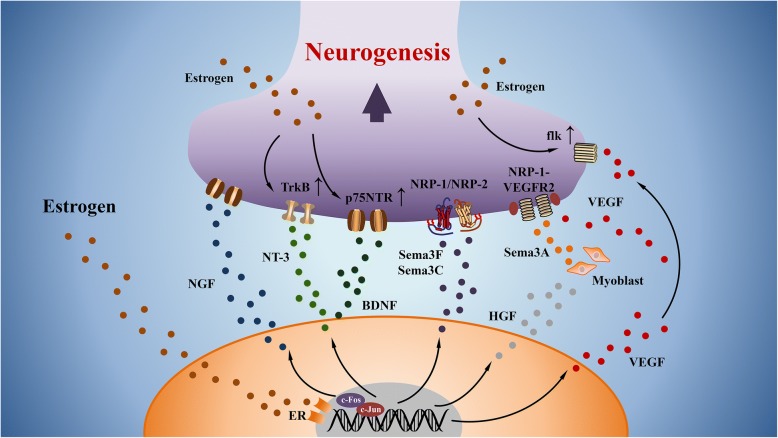Fig. 2.
Neurogenesis regulated by macrophages in an estrogen-dependent manner. Estrogen can upregulate the expression of NGF from macrophages through the induction of c-Fos/c-Jun heterodimers. Expression of NT3 and BDNF is also increased in response to estrogen. Both of their receptors, TrkB and p75NTR, are upregulated under the effect of estrogen on peripheral nerves. The expression of Sema3F and Sema3C from macrophage can reduce the sympathetic innervation through binding their receptors, NRP1 and NRP2. High level of HGF from macrophage induces the expression of Sema3A from myoblast in response to estrogen. Estrogen can also stimulate the secretion of VEGF from macrophage and increase the expression of the VEGF receptor flk on peripheral nerve. Imbalanced concentration of VEGF and Sema3A can activate the nerve fiber via NRP1-VEGFR2 axis. Dysregulation of all nerve growth factors from macrophage and their receptors on nerve fibers eventually result in aberrant neurogenesis in endometriosis. NGF: nerve growth factor; NT3: neurotrophin 3; BDNF: brain-derived nerve growth factor; TrkB: tyrosine kinase receptor B; Sema3F, 3C, 3A: Semaphorin 3F, 3C, 3A; NRP1, 2: neuropilin1, 2; HGF: hepatocyte growth factor; VEGF: vascular epithelial growth factor; flk: vascular epithelial growth factor receptor 2

